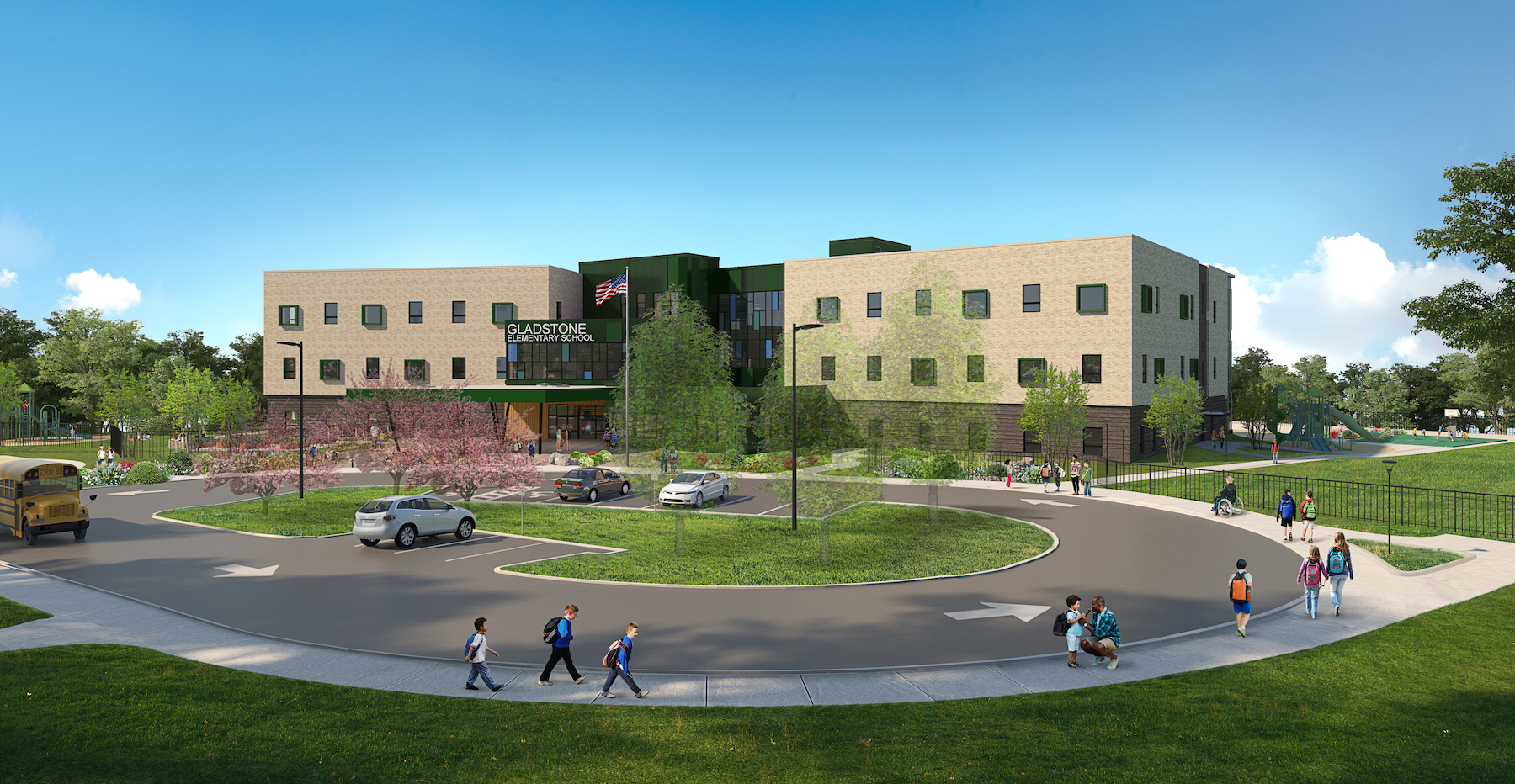Last November, Community Consolidated School District 15, consisting of 20 schools and seven municipalities in Illinois, approved the $93 million Moving 15 Forward referendum. Upon that approval, the District began work to address three major areas of improvement: repairing and restoring facilities, updating learning spaces, and streamlining students’ transitions from elementary through middle school into local high school districts 211 and 214.
Included in this effort is the expansion of Plum Grove Junior High School in Rolling Meadows, Ill., from a junior high serving seventh and eighth graders into a middle school that also educates sixth grade students.
Plum Grove Middle School, which will serve more than 800 students, is seen as a cornerstone of the District’s move toward adolescent-focused middle schools that use the “house” concept, which creates teams of teachers and staff that share smaller groups of students through an academic schedule.
Plum Grove’s $18.4 million upgrade and expansion got started on July 27. Wold Architects and Engineers provided the designs, and Nicholas & Associates is the general contractor. As part of Phase 1 of a four-phase construction plan, additions at Plum Grove include two new three-story classroom wings, or “houses,” which form the backbone of the middle school concept, for a total of 12 new general education classrooms.
Each grade-level house has its own learning commons with an innovative shared learning hub, including a central collaboration space, new science lab spaces, and modern, flexible classrooms. In addition, the project includes site updates such as traffic and paving improvements, a new track, and play fields.
Construction is expected to be completed for the 2024-2025 school year.
Sustainable, energy efficient design

A week before Plum Grove’s expansion was getting underway, the City of Cranston, R.I., held a groundbreaking ceremony for its new $83 million, 105,000-sf Gladstone Elementary School. This is one of five core building projects identified in Cranston’s five-year facility improvement plan that has been approved by Rhode Island School Building Authority for Housing Aid State Reimbursement.
Gladstone Elementary will be 40,000 sf larger than the existing school it replaces, and will incorporate the student body of Arlington Elementary, bringing its total to 798 K-5 students. The Building Team on this project includes Gilbane Building Company, Jacobs Engineering, and Finegold Alexander Architects. Construction is scheduled for completion in 2025.
The old school had been functioning up until June 14, but was in serious need of repair, with boarded-up windows. It will be demolished and during construction students will be relocated to a temporary location in Cranston.
The new building is designed to exceed current sustainability and energy codes. A combination of sub-surface and surface stormwater filtration systems are part of its scope, and the project will be compliant with the Northeast Collaborative for High-Performance Schools Criteria program (NE-CHPs), which provides guidance and verification for new school projects, renovations, and additions.
Gladstone will feature a combination of learning and community engagement areas, like a cafeteria and gymnasium with performance spaces. Its learning spaces will be modeled after Eden Park School in Garden City, where open floor plans contribute to collaborative learning environments. Gladstone will also have designated special-education classrooms, administration areas, a nurse’s office, and food preparation space.
Related Stories
| Jan 13, 2014
AEC professionals weigh in on school security
An exclusive survey reveals that Building Teams are doing their part to make the nation’s schools safer in the aftermath of the Sandy Hook tragedy.
| Jan 11, 2014
Getting to net-zero energy with brick masonry construction [AIA course]
When targeting net-zero energy performance, AEC professionals are advised to tackle energy demand first. This AIA course covers brick masonry's role in reducing energy consumption in buildings.
| Jan 10, 2014
What the states should do to prevent more school shootings
To tell the truth, I didn’t want to write about the terrible events of December 14, 2012, when 20 children and six adults were gunned down at Sandy Hook Elementary School in Newtown, Conn. I figured other media would provide ample coverage, and anything we did would look cheap or inappropriate. But two things turned me around.
| Jan 10, 2014
Special Report: K-12 school security in the wake of Sandy Hook
BD+C's exclusive five-part report on K-12 school security offers proven design advice, technology recommendations, and thoughtful commentary on how Building Teams can help school districts prevent, or at least mitigate, a Sandy Hook on their turf.
| Jan 9, 2014
How security in schools applies to other building types
Many of the principles and concepts described in our Special Report on K-12 security also apply to other building types and markets.
| Jan 9, 2014
16 recommendations on security technology to take to your K-12 clients
From facial recognition cameras to IP-based door hardware, here are key technology-related considerations you should discuss with your school district clients.
| Jan 9, 2014
Special report: Can design prevent another Sandy Hook?
Our experts say no, but it could save lives. In this report, they offer recommendations on security design you can bring to your K-12 clients to prevent, or at least mitigate, a Sandy Hook on their turf.
Smart Buildings | Jan 7, 2014
9 mega redevelopments poised to transform the urban landscape
Slowed by the recession—and often by protracted negotiations—some big redevelopment plans are now moving ahead. Here’s a sampling of nine major mixed-use projects throughout the country.
| Jan 6, 2014
What is value engineering?
If you had to define value engineering in a single word, you might boil it down to "efficiency." That would be one word, but it wouldn’t be accurate.
| Dec 17, 2013
Nation's largest net-zero K-12 school among winners of 2013 Best of Green Schools award
The Lady Bird Johnson Middle School in Irving, Texas, was named a winner of USGBC's annual award, along with nine other schools, individuals and communities working toward the common goal of healthy, high-performing learning places.

















